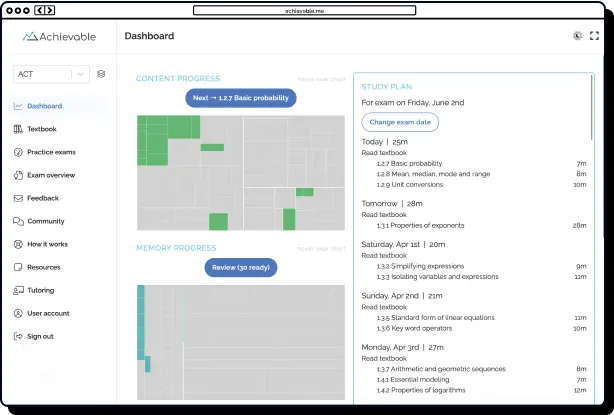
Leverage epidemiologic data to outsmart USMLE exam distractors




Table of contents
- Leverage epidemiologic data to outsmart exam distractors
- Tackle dermatology questions efficiently with high-yield epidemiology tables
- Why comparative epidemiology tables boost your exam strategy
- Using epidemiology to eliminate distractors
- Use epidemiologic clues to crack challenging USMLE dermatology questions
- Use age and location trends to avoid common USMLE pitfalls
- Combine demographic and epidemiologic clues for accurate USMLE diagnoses
- Solidify key epidemiology concepts with focused flashcards and timed practice
This article is part 3 of 6 in our USMLE dermatology series, where we provide you with all the information you need to study for and ace dermatology-related questions and vignettes on your medical residency exams. In part 3, we explore how to effectively use charts, data, and diagnostic criteria to make important determinations about a patient's health.

Leverage epidemiologic data to outsmart exam distractors
Tackle dermatology questions efficiently with high-yield epidemiology tables
As a USMLE candidate, you know that epidemiologic data isn't just trivia - it's a tool to rapidly narrow your differential. Mastering facts like prevalence, age distribution, sex ratios, and ethnicity-specific risks enables you to quickly rule out unlikely answers and zero in on the correct diagnosis, even with challenging vignettes.
Why comparative epidemiology tables boost your exam strategy
Side-by-side comparison tables provide a high-yield way to consolidate and recall crucial statistics under pressure. Focus on memorizing and actively applying data points such as:
- Melanoma: Incidence is 21.9 per 100,000 annually (men: 27.8, women: 17.5). Non-Hispanic White men: 39.7/100,000; non-Hispanic Black men: 1.0/100,000 (SEER Cancer Stat Facts on melanoma incidence). Age is also an underlying factor: most are diagnosed at a median age of 66. Prior basal cell carcinoma (BCC) increases melanoma risk 6.6-fold (PMC research on BCC and melanoma risk).
- Basal cell carcinoma (BCC): Americans, especially fair-skinned adults over 40, have a higher chance of developing BCC in their lifetime, and risk rises with age (Stanford Medicine on BCC risk).
- Atopic dermatitis (AD): Females are slightly more affected worldwide. In the US, non-Hispanic Black adults have a higher prevalence (8.6%) than Whites (7.7%), challenging outdated assumptions (PubMed global epidemiology of atopic dermatitis; Allergy & Asthma Network eczema statistics).
Quick reference table:
| Condition | Peak age | Sex ratio | Ethnic distribution |
|---|---|---|---|
| Melanoma | 65-74 | Men > Women | Whites ≫ Blacks |
| Basal cell carcinoma | >40 | Slightly more Men | Fair-skinned ≫ Other groups |
| Atopic dermatitis | 0-5 (peak) | Women > Men | Blacks ≥ Whites (US data) |
Using epidemiology to eliminate distractors
USMLE vignettes often hinge on subtle demographic details. For example, if you see a young Black woman with "eczema," recall that Black adults have higher AD prevalence in the US, even though AD is most common in children - this sharpens your diagnostic reasoning. Similarly, knowing that BCC is more common than melanoma helps you avoid common traps.
Epidemiology isn't just for fact recall - it's central to clinical reasoning and board-style questions. Regularly practicing with these tables will help you rapidly apply them on exam day.
Use epidemiologic clues to crack challenging USMLE dermatology questions
High-scoring test-takers use patient age, ethnicity, medication exposure, and family history to quickly narrow differentials and eliminate unlikely answers. Here's how to leverage these clues for exam success:
Key strategies:
- Apply demographic trends: Acral lentiginous melanoma comprises up to 72% of melanomas in African American and Asian patients, but under 5% in Caucasians. If a vignette presents a fair-skinned patient, this diagnosis is unlikely (NCBI article on acral lentiginous melanoma demographics). Nodular melanoma (worst prognosis) is rare in darker-skinned patients - use this to your advantage.
- Spot comorbidity links: Erythema nodosum occurs in up to a third of patients with IBD or sarcoidosis. If you see chronic diarrhea and shin nodules, think Crohn's; if GI symptoms are absent, question the association (YouTube explanation of erythema nodosum associations).
- Watch for medication triggers: Lichen planus after starting an ACE inhibitor is sometimes drug-induced. If no new medication is present, reconsider your differential (YouTube video on drug-induced lichen planus risk).
- Consider family and autoimmune background: A family history of autoimmune thyroid disease or type 1 diabetes increases vitiligo risk. Without it, pause before settling on the diagnosis (PMC study on vitiligo and family history of autoimmunity).
- Evaluate etiologic factors: HSV is responsible for about 90% of erythema multiforme cases. If there's no herpes history, the diagnosis is less likely. Stevens-Johnson syndrome is drug-induced in most cases (YouTube discussion on SJS etiology).
Efficiency tip: Before interpreting skin findings, use epidemiologic clues to rule out unlikely options. In fact, these contextual details influence management or diagnosis in 77% of dermatology consults in a study (PMC data on dermatology consult impact).
By integrating these data points into your approach, you'll minimize errors and sidestep classic distractors on test day.
Use age and location trends to avoid common USMLE pitfalls
The USMLE is designed to test your ability to recognize subtle epidemiologic shifts that influence disease likelihood. Patterns in incidence, prevalence, age, and setting can be the difference between a right or wrong answer.
Melanoma: Changing age and sex patterns
- Historical shifts: Melanoma rates increased in the US from 1973 to 2004, but more so for women aged 15-39. In young men, rates plateaued after 1980. Young women remain at a higher risk than young men (PMC article on melanoma epidemiology in young adults).
- Recent trends in youth: Melanoma rates have dropped among US adolescents and young adults (2006-2015), but are rising in older adults - likely due to sun education campaigns (UW Newsroom study on declining melanoma rates in youth).
Atopic dermatitis: Measuring the urban effect
- Children in urban settings have a 56% higher chance of developing atopic dermatitis (OR ~1.56; Wiley research on urban vs rural atopic dermatitis risk).
- The difference is significant in children, not adults.
- In US cities, Black children and girls are more likely to have persistent AD.
Stepwise approach:
If a clinical vignette includes a demographic or location detail, ask yourself: Does this match what is expected for the disease? Don't let outdated assumptions trip you up: the USMLE tests your ability to apply up-to-date epidemiological reasoning.
By tuning into these patterns, you'll avoid common distractors and outperform your peers.

Combine demographic and epidemiologic clues for accurate USMLE diagnoses
When confronted with similar clinical presentations, top USMLE scorers use demographic prevalence to refine their differential. For example, facial erythema in a 55-year-old Northern European woman versus a 16-year-old. Epidemiology tells you which diagnoses are more likely for each.
Key female-predominant dermatologic conditions:
- Rosacea
- Alopecia areata
- Systemic lupus erythematosus (SLE)
- Acne
- Hidradenitis suppurativa
When a vignette features a woman, weigh these diagnoses more heavily. Similarly, rosacea, photoaging, melanoma, and pigmentary disorders are most common in fair-skinned, European-ancestry patients - ethnicity is often a key clue.
Age and time trends also sharpen your diagnostic accuracy: acne peaks in young adults, atopic dermatitis in early childhood and adulthood. Environmental or societal shifts, such as the COVID-19 pandemic's effect on dermatology visits, can also change prevalence patterns, which the USMLE may reflect.
Board-style takeaway: Blend clinical and epidemiologic data to spot patterns, rule out rare distractors, and choose the likeliest diagnosis - just as you would on the wards.
Solidify key epidemiology concepts with focused flashcards and timed practice
USMLE success depends on rapid recall and confident interpretation of epidemiologic concepts.
Optimize your retention with flashcards: Spaced-repetition platforms like Brainscape help you lock in prevalence, incidence, sensitivity/specificity, and study design differences (odds ratio vs relative risk).
Students who use targeted flashcards answer NNT and PPV questions faster than those using standard notes. Adaptive systems keep you challenged and prepare you for board-level speed (Brainscape's adaptive dermatology USMLE flashcards).
Dermatology-specific drills: Practice differentiating the prevalence of psoriasis (2-3%) from eczema (10-20%) with resources like Dermatology Flashcards for the USMLE by Dr. Leigh Carter to ensure high-yield recall.
Mnemonics work, too: Picmonic's visual memory aids can help you master tough concepts like 'lead-time bias' and boost your performance (Picmonic visual epidemiology mnemonics).
Timed practice: Challenge yourself to answer epidemiology questions in under 45 seconds. Use Cram's epidemiology and biostatistics USMLE flashcards to drill confidence intervals, p-values, and prevalence - so you're ready for anything the exam throws at you.
Click here for part 4, "Distinguish pediatric from adult dermatology for accurate differentials." Read on to find out how different dermatological conditions present in both adult and child populations.

